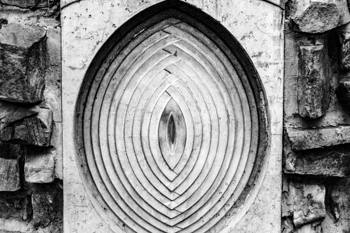 Quick as a cut, darkness came to the afternoon, to the nursery where I sat cross-legged on the floor, a white raft of a blanket under us. My newborn sucked her fingers while clumped in the crooks of my arms. We both squinted toward the window, trying to make sense of it all: the sudden changes in light from day to night; the soft thuds of cushioned slaps. The shifting light soon emerged into an understanding. A clump of fifty starlings were murmuring from one window to the next, blocking and unblocking the light, beading and unbeading their eyes, staring in at us staring out at them.
Quick as a cut, darkness came to the afternoon, to the nursery where I sat cross-legged on the floor, a white raft of a blanket under us. My newborn sucked her fingers while clumped in the crooks of my arms. We both squinted toward the window, trying to make sense of it all: the sudden changes in light from day to night; the soft thuds of cushioned slaps. The shifting light soon emerged into an understanding. A clump of fifty starlings were murmuring from one window to the next, blocking and unblocking the light, beading and unbeading their eyes, staring in at us staring out at them.
I had marveled before at such a sight, when a flock shape-shifts over a city sky as night begins to fall, turning one direction, then to the next, as if the same invisible string pulled the hundred bodies. Murmurations is the name scientists give such movement, similar to crystal formations, avalanches, or liquids turning to gases. Giorgio Parisi, who has studied these events, describes these systems to be “on the cusp of a shift.” They can transform in an instant, synchronizing not as a whole necessarily, but through the interaction of one bird with seven of its neighboring birds—and so on, until a flock of fifty can move as one.
As they swung from one of the nursery’s windows to the next, taking the corner with a mad hatter’s hurtling speed, I wondered could the mass misdirect and bash in the windows? But they wouldn’t do that, I kept thinking. Would they? As a new mother, I knew well the innocence that precipitated any mistake. I felt my baby’s soft form stiffen—and I too stiffened, aware for the first time that she was fully aware. Her fear suddenly made her more real to me than the birth. The birds, the baby, the abrupt turns of day and night, everyone and everything agreeing and disagreeing on what constitutes the thin ends of a beating wing, the thin ends of the thing we call life.
* Work referenced: Heimburch, Jaymi. “The Incredible Science Behind Starling Murmurations.” Mother Nature Network. 9 January 2014. Online.
__
Charlotte Pence’s first book of poems, Many Small Fires, received an INDIEFAB Book of the Year Award from Foreword Reviews. The book explores her father’s chronic homelessness while simultaneously detailing the physiological changes that enabled humans to form cities, communities, and households. She is also the author of two award-winning poetry chapbooks and the editor of The Poetics of American Song Lyrics. In the fall of 2017, she will become director of the Stokes Center for Creative Writing at the University of South Alabama.
Photo by Heather Kresge

1 comment
Shirley Harshenin says:
Aug 10, 2017
A lovely lyrical piece! I too marvel at these graceful gorgeous shape-shifting formations. Stunning, brilliant birds. I also relate to the new mother’s thoughts, fears, observations and insights. Beautifully done.